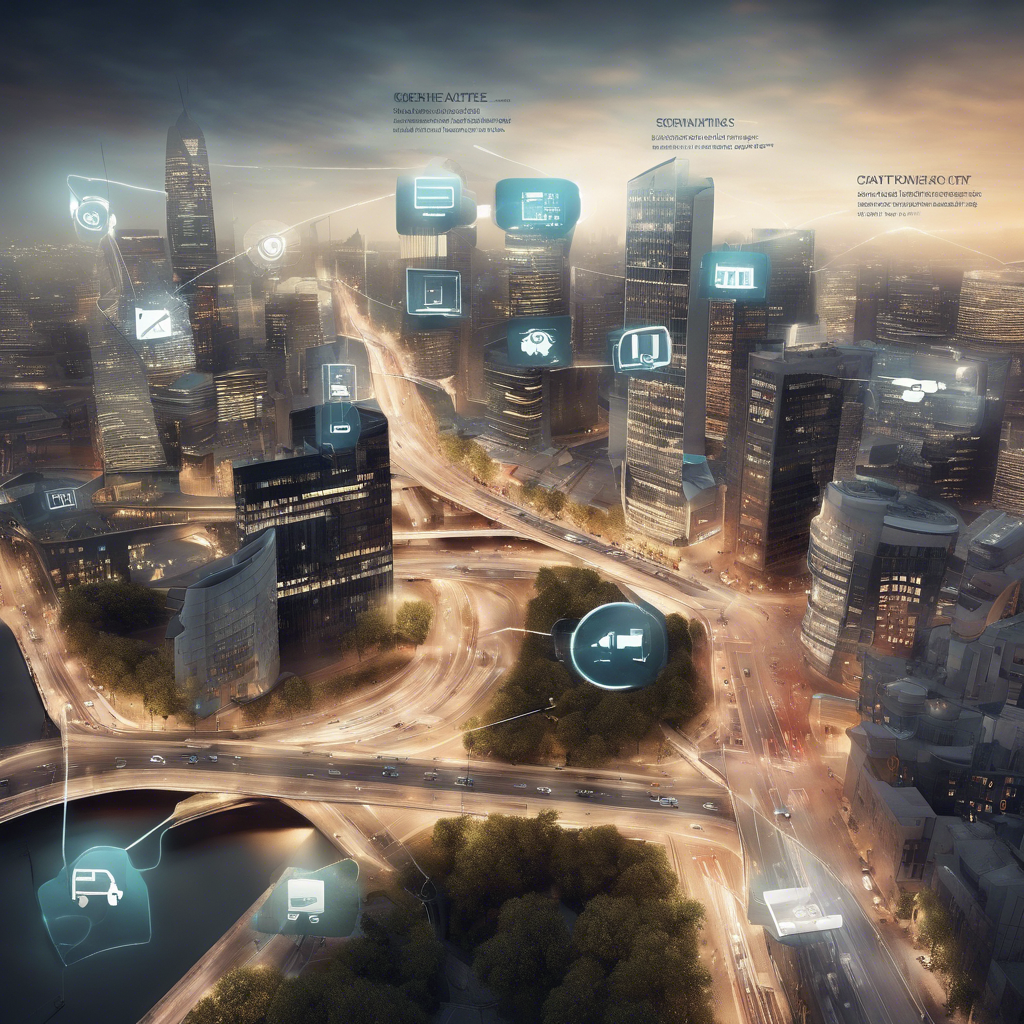
Envision a futuristic urban landscape where every aspect of daily life is optimized through the harmonious fusion of cutting-edge technology and traditional infrastructure. In these Smart Cities, the Internet of Things (IoT) serves as the backbone of a sophisticated network that connects devices, sensors, and systems to streamline operations and improve the quality of life for residents.
Picture a city where traffic flows smoothly thanks to real-time data analytics that optimize traffic light patterns and reroute vehicles to avoid congestion. Imagine waste management systems that intelligently monitor trash levels in bins, optimizing collection routes to reduce fuel consumption and emissions.
Moreover, in these Smart Cities, public safety reaches new heights with advanced surveillance systems that use AI algorithms to detect anomalies and respond proactively to potential threats. Emergency services are equipped with real-time data on incidents, enabling faster response times and more efficient resource allocation.
Sustainability is a core pillar of Smart Cities, with renewable energy sources powering streetlights, buildings, and public transportation. Smart grids intelligently manage energy distribution, reducing waste and lowering carbon emissions. Green spaces are abundant, promoting biodiversity and providing residents with a breath of fresh air amidst the urban environment.
Ultimately, the vision of Smart Cities is not just about technological advancement but about creating inclusive, livable communities that prioritize efficiency, sustainability, and innovation. By embracing the potential of the Internet of Things, cities can transform into vibrant hubs of progress where residents thrive in a connected and forward-thinking environment.
The Rise of Smart Cities
Smart Cities are at the forefront of urban development, utilizing state-of-the-art technologies such as the Internet of Things (IoT) to revolutionize the way cities operate. By harnessing the power of IoT, cities can create interconnected networks of various devices, ranging from traffic lights and waste management systems to public transportation and energy grids. These devices are equipped with sensors, software, and communication technologies that enable them to gather and share real-time data, leading to more informed decision-making processes.
One of the key advantages of implementing IoT in Smart Cities is the ability to improve the quality of life for residents. For example, by deploying smart sensors in public spaces, cities can monitor air quality levels, noise pollution, and traffic congestion, allowing authorities to take proactive measures to address these issues promptly. Additionally, IoT-enabled devices can enhance public safety by providing real-time data on emergencies, enabling faster response times from emergency services.
Moreover, IoT plays a crucial role in optimizing urban operations and resource management. Through the use of connected devices, cities can streamline processes such as waste collection, energy consumption, and water distribution. By analyzing the data collected from IoT devices, city officials can identify areas for improvement, reduce inefficiencies, and ultimately create more sustainable and resilient urban environments.
In conclusion, Smart Cities leverage cutting-edge technologies like the Internet of Things to create more efficient, sustainable, and livable urban spaces. By embracing IoT, cities can enhance the well-being of their residents, improve operational efficiency, and pave the way for a smarter and more connected future.
Enhancing Urban Mobility
One of the key benefits of IoT in Smart Cities is the optimization of urban mobility. Through the deployment of connected sensors and smart transportation systems, cities can effectively manage traffic flow, reduce congestion, and enhance public transportation services. Citizens can enjoy smoother commutes, reduced travel times, and decreased carbon emissions.

Improving Resource Management
IoT enables Smart Cities to monitor and manage valuable resources such as water, energy, and waste more effectively. By deploying smart meters and sensors, cities can track consumption patterns in real-time, identify areas of inefficiency, and implement strategies to optimize resource usage. This not only leads to cost savings but also contributes to environmental sustainability.

Enhancing Public Safety
Safety is a top priority in any urban environment, and IoT plays a crucial role in strengthening public safety measures. Smart Cities deploy IoT-enabled surveillance systems, emergency response mechanisms, and predictive analytics tools to identify potential risks, respond to emergencies swiftly, and ensure the well-being of citizens. By leveraging real-time data and automated processes, cities can create safer living environments for residents.

The Future of Urban Living
As technology continues to evolve, the possibilities for Smart Cities powered by IoT are endless. From connected streetlights that adjust brightness based on ambient light levels to smart waste management systems that optimize garbage collection routes, the urban landscape is undergoing a profound transformation. By embracing the benefits of IoT, cities can pave the way for a more sustainable, efficient, and livable future.
In conclusion, the Internet of Things is revolutionizing urban environments, driving innovation, efficiency, and sustainability across Smart Cities worldwide. By harnessing the power of IoT, cities can optimize resource allocation, improve public services, and create inclusive communities where residents can thrive. As we look ahead to the future, the potential of IoT in shaping advanced urban landscapes is truly limitless.
Stay tuned for more insights on the transformative impact of technology on our cities and societies!
Thank you for reading our blog post on the benefits of the Internet of Things for Smart Cities. Stay informed on the latest trends in technology and urban development by subscribing to our newsletter.
Comments